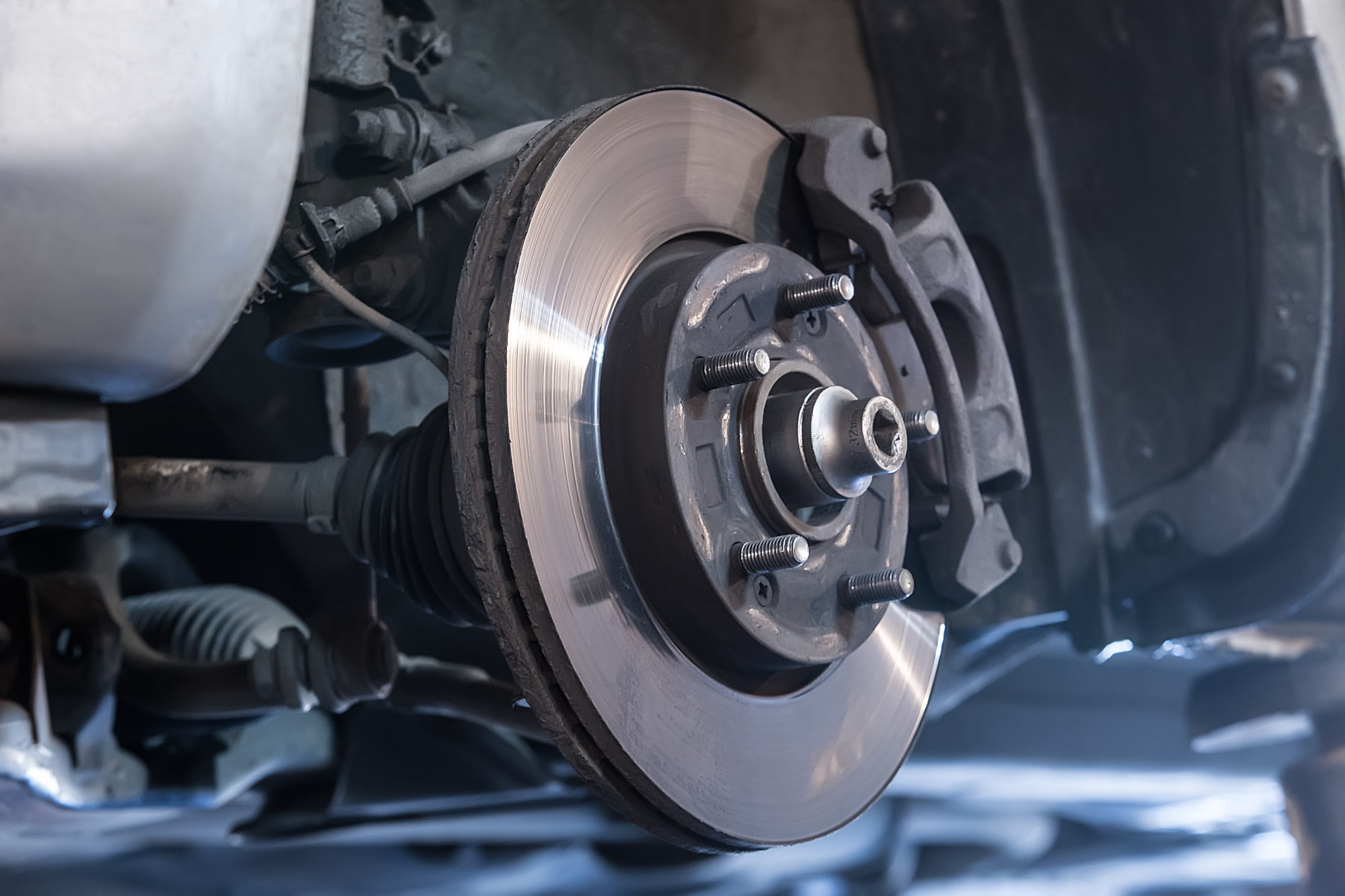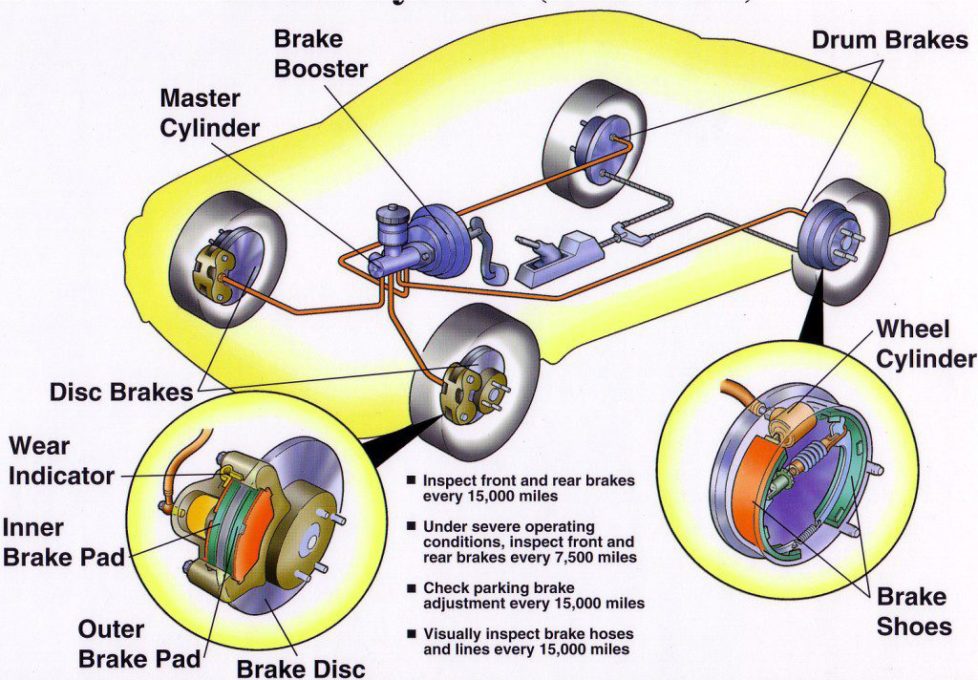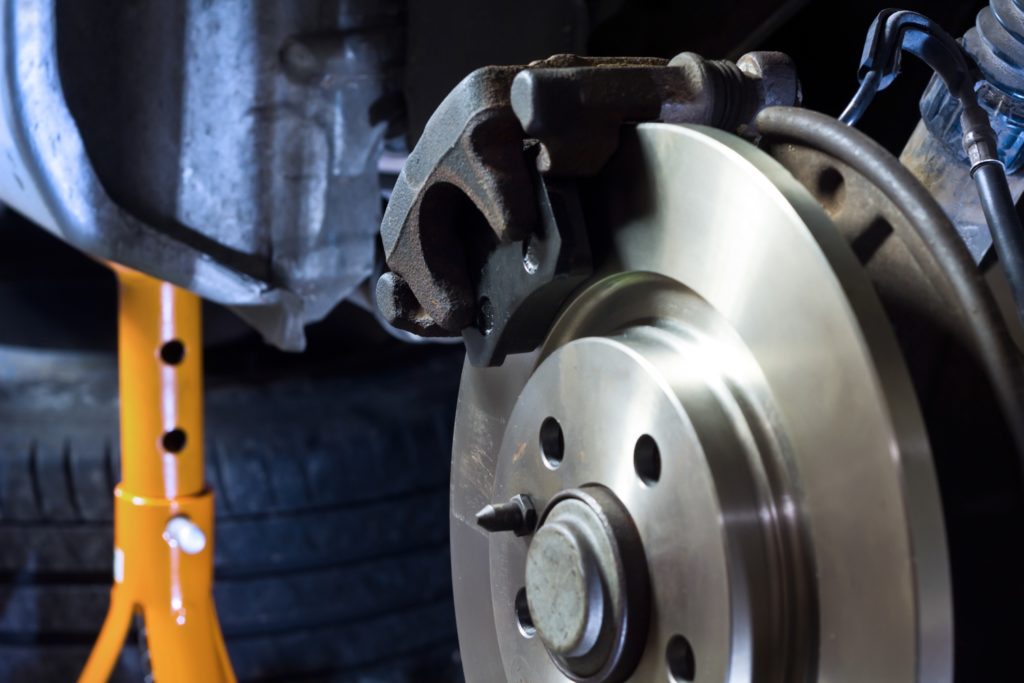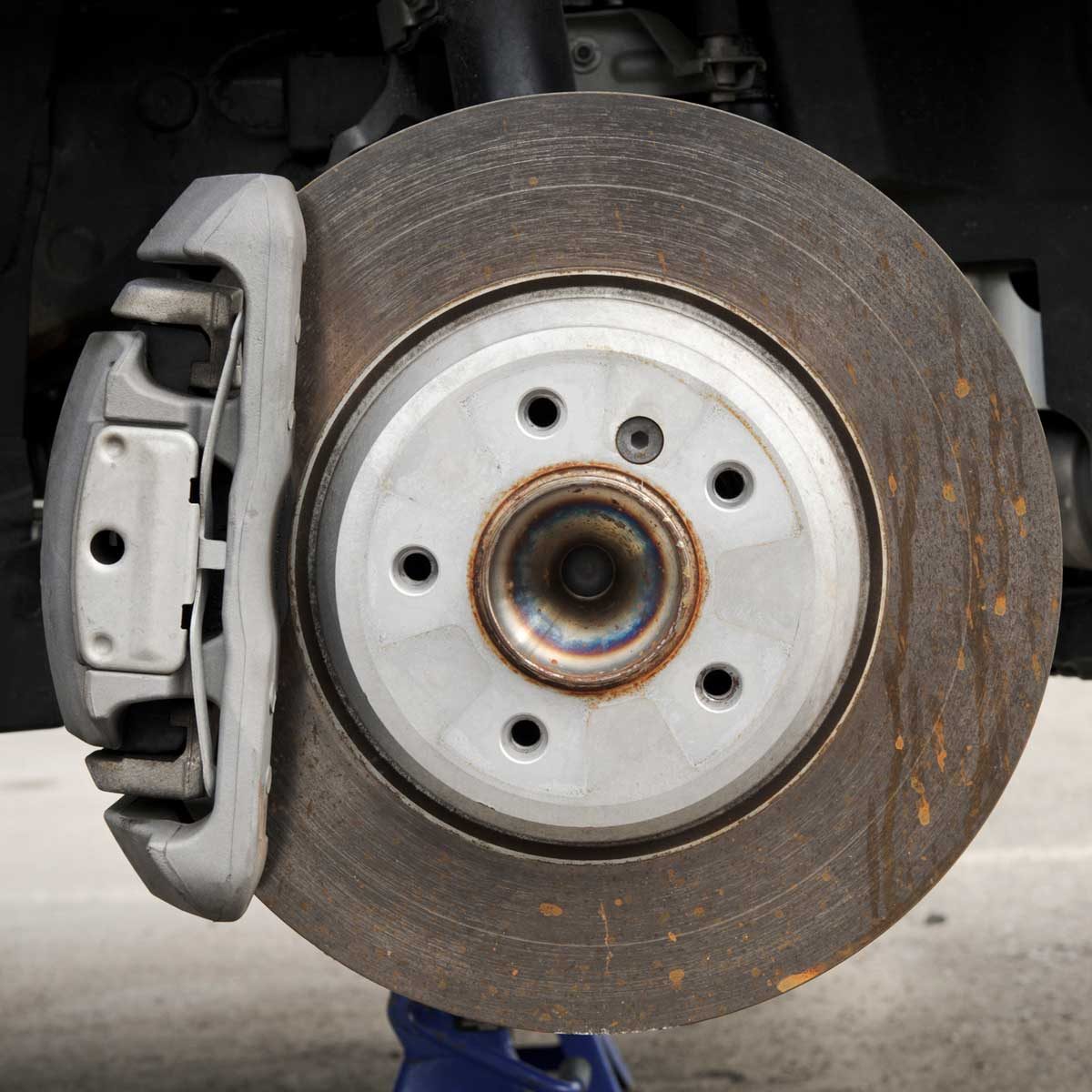Your How do car brakes work images are available. How do car brakes work are a topic that is being searched for and liked by netizens now. You can Find and Download the How do car brakes work files here. Find and Download all royalty-free images.
If you’re searching for how do car brakes work images information connected with to the how do car brakes work topic, you have come to the right site. Our site always provides you with hints for viewing the maximum quality video and picture content, please kindly hunt and find more informative video content and graphics that fit your interests.
How Do Car Brakes Work. There are separate electric motors on each brake and they activate at the same time, forcing the motor in the brakes to squeeze into the disc and halt the car’s movement. When the brake is applied, fluid is forced into the master cylinder and pushes the pistons in the caliper. The most common type of brake used on aircraft is the disc brake. The brake is released automatically when you press your foot on the accelerator.
 How Do Car Brakes Work? Wonderopolis From wonderopolis.org
How Do Car Brakes Work? Wonderopolis From wonderopolis.org
The hydraulic pressure pushes the caliper pistons out. When you apply the emergency brake, the metallic cable it is connected to passes through an intermediate lever, enhancing the power of the pulling. Then, comes an equalizer that splits that power evenly between the brakes. It is also widely used on both front & rear wheels of trucks, buses, and other commercial vehicles. The key components of your vehicle braking system include a master cylinder, servo, brake callipers, brake fluid and cylinders, disks, drums, pads and shoes. So, how do car brakes work?
There are separate electric motors on each brake and they activate at the same time, forcing the motor in the brakes to squeeze into the disc and halt the car’s movement.
The brake pads or �shoes� are housed within the drum, and pressing the brakes forces the shoes outwards onto the inner edge of the drum which slows the car. The modern brake pad, caliper and disc rotor assembly have a lot of moving parts all working together to stop your vehicle. the brakes transmit the force to the tires using friction, and the tires transmit that force to the road using friction also. When the driver presses the pedal, a piston inside the brake master cylinder pressurizes hydraulic fluid in the brake lines, which moves the pistons and pushes the pads into the rotor. When the brake is applied, fluid is forced into the master cylinder and pushes the pistons in the caliper. When you apply the emergency brake, the metallic cable it is connected to passes through an intermediate lever, enhancing the power of the pulling.
 Source: onlineautorepair.net
Source: onlineautorepair.net
The disc brakes are similar to the brakes on a. This pushes the face of the brake pad towards the surface of the brake disk, clamping on the spinning rotor. The air from the valves is delivered to the brake chambers. The master cylinder, mounted to the handlebar, houses the brake lever and together they produce the input force needed to push hydraulic brake fluid to the slave cylinder (or caliper) and cause the brake pads to clamp the rotor. When the driver presses the pedal, a piston inside the brake master cylinder pressurizes hydraulic fluid in the brake lines, which moves the pistons and pushes the pads into the rotor.
 Source: nepalautotrader.com
Source: nepalautotrader.com
This pushes the face of the brake pad towards the surface of the brake disk, clamping on the spinning rotor. Basically, if you don’t respond in time to a sudden braking situation, the automatic braking system works to reduce the chance of a crash, as well as reduce the severity of a collision if it occurs. Releasing when you apply the brakes, the air will escape after braking, and all that pressure will release the brakes. Since the system is completely electronic and automatic, it is quick, efficient and reliable. It is also widely used on both front & rear wheels of trucks, buses, and other commercial vehicles.
 Source: wonderopolis.org
Source: wonderopolis.org
Then, comes an equalizer that splits that power evenly between the brakes. Car tow dolly brake explained… the most common question i am asked is, “ how do car tow dolly hydraulic brakes work?”. When the driver presses the pedal, a piston inside the brake master cylinder pressurizes hydraulic fluid in the brake lines, which then pressurizes the wheel cylinder and pushes the shoes into the drum. In pretty much every case, automatic braking is part of a suite of safety system technology that works together to save your sorry butt. the brakes transmit the force to the tires using friction, and the tires transmit that force to the road using friction also.
 Source: wonderopolis.org
Source: wonderopolis.org
Air brakes and spoilers are flight control surfaces that create additional aerodynamic drag when deployed into the path of air flowing around the aircraft. Animated video showing the working of braking system in a car. The master cylinder, mounted to the handlebar, houses the brake lever and together they produce the input force needed to push hydraulic brake fluid to the slave cylinder (or caliper) and cause the brake pads to clamp the rotor. Today’s vehicle braking systems involve many different components working together to help you to stop and manoeuvre your vehicle in a controlled manner. A piston moves into the cylinder and it squeezes hydraulic fluid out of the end.
 Source: popsautoelectric.com
Source: popsautoelectric.com
The harder the clamping action of the caliper, the more heat it generates. Mechanical advantage (leverage) hydraulic force multiplication. Disc brakes function by exploiting friction between rotating and stationary discs inside the brake. The system in a subaru is called eyesight; One on each side of the disc.
 Source: southcrossautomn.com
Source: southcrossautomn.com
In a volvo, it�s called city safety. The master cylinder, mounted to the handlebar, houses the brake lever and together they produce the input force needed to push hydraulic brake fluid to the slave cylinder (or caliper) and cause the brake pads to clamp the rotor. The brake is released automatically when you press your foot on the accelerator. About press copyright contact us creators advertise developers terms privacy policy & safety how. Put it all together and here’s how car brakes work in a nutshell:
 Source: yourbrakes.com
Source: yourbrakes.com
How do disc brakes work? So today we will explain car tow dolly brakes. The key components of your vehicle braking system include a master cylinder, servo, brake callipers, brake fluid and cylinders, disks, drums, pads and shoes. To stop a car, the brakes have to get rid of that kinetic energy. Some systems are designed to prevent collisions altogether, but most simply reduce the vehicle’s speed before a collision, thereby reducing the magnitude of injury and damage.
 Source: carparts.com
Source: carparts.com
the brakes transmit the force to the tires using friction, and the tires transmit that force to the road using friction also. Today’s vehicle braking systems involve many different components working together to help you to stop and manoeuvre your vehicle in a controlled manner. The system in a subaru is called eyesight; Other manufacturers, including cadillac and. Some of you are probably wondering how do formula one cars, which reach speeds in excess of 200 mph (321 km/h), manage to brake so effectively at the end of a.
 Source: youtube.com
Source: youtube.com
Air brakes and spoilers are flight control surfaces that create additional aerodynamic drag when deployed into the path of air flowing around the aircraft. Mechanical advantage (leverage) hydraulic force multiplication. When you apply the emergency brake, the metallic cable it is connected to passes through an intermediate lever, enhancing the power of the pulling. The air from the valves is delivered to the brake chambers. The air from the reservoirs is supplied to the brake valves.
 Source: pinterest.ca
Source: pinterest.ca
The brake pads or �shoes� are housed within the drum, and pressing the brakes forces the shoes outwards onto the inner edge of the drum which slows the car. The brake pads or �shoes� are housed within the drum, and pressing the brakes forces the shoes outwards onto the inner edge of the drum which slows the car. The car handbrake is designed to bypass the hydraulic braking system in the event of a failure. It is then amplified further by the action of the brake booster. The modern brake pad, caliper and disc rotor assembly have a lot of moving parts all working together to stop your vehicle.
 Source: learndriving.tips
Source: learndriving.tips
When the driver presses the pedal, a piston inside the brake master cylinder pressurizes hydraulic fluid in the brake lines, which then pressurizes the wheel cylinder and pushes the shoes into the drum. The brake pads or �shoes� are housed within the drum, and pressing the brakes forces the shoes outwards onto the inner edge of the drum which slows the car. Some of you are probably wondering how do formula one cars, which reach speeds in excess of 200 mph (321 km/h), manage to brake so effectively at the end of a. When the air decreases, the valve allows air back into the reservoir tanks and the brakes move to the applied position. It is also widely used on both front & rear wheels of trucks, buses, and other commercial vehicles.
 Source: carcarehunt.com
Source: carcarehunt.com
Releasing when you apply the brakes, the air will escape after braking, and all that pressure will release the brakes. The more pistons a caliper has. One on each side of the disc. The brakes should respond instantaneously. How do disc brakes work?
 Source: familyhandyman.com
Source: familyhandyman.com
The air from the reservoirs is supplied to the brake valves. The car brake system works in a few ways: Car tow dolly brake explained… the most common question i am asked is, “ how do car tow dolly hydraulic brakes work?”. Basically, if you don’t respond in time to a sudden braking situation, the automatic braking system works to reduce the chance of a crash, as well as reduce the severity of a collision if it occurs. Before we begin our discussion on the components of the brake system, we�ll cover these three principles:
 Source: rohrmanhonda.com
Source: rohrmanhonda.com
the brakes transmit the force to the tires using friction, and the tires transmit that force to the road using friction also. Each wheel has one brake caliper. It is also widely used on both front & rear wheels of trucks, buses, and other commercial vehicles. How do disc brakes work? Today bendix will show you how th.
Source: quora.com
The hydraulic pressure pushes the caliper pistons out. Some of you are probably wondering how do formula one cars, which reach speeds in excess of 200 mph (321 km/h), manage to brake so effectively at the end of a. The system in a subaru is called eyesight; When the driver presses the pedal, a piston inside the brake master cylinder pressurizes hydraulic fluid in the brake lines, which moves the pistons and pushes the pads into the rotor. The hydraulic pressure pushes the caliper pistons out.
 Source: rnlautomotive.com
Source: rnlautomotive.com
Air brakes and spoilers are flight control surfaces that create additional aerodynamic drag when deployed into the path of air flowing around the aircraft. This pushes the face of the brake pad towards the surface of the brake disk, clamping on the spinning rotor. The brake fluid transfers the pressure to the brake calipers. the brakes transmit the force to the tires using friction, and the tires transmit that force to the road using friction also. To stop a car, the brakes have to get rid of that kinetic energy.
 Source: carfromjapan.com
Source: carfromjapan.com
The car handbrake is designed to bypass the hydraulic braking system in the event of a failure. The brake fluid transfers the pressure to the brake calipers. Drivers generate hydraulic pressure by pressing the brake pedal, and that pressure travels to the brake. First, understand that to be 50 state legal you must have brakes of some kind on your car tow dolly. Mechanical advantage (leverage) hydraulic force multiplication.

This pushes the face of the brake pad towards the surface of the brake disk, clamping on the spinning rotor. The key components of your vehicle braking system include a master cylinder, servo, brake callipers, brake fluid and cylinders, disks, drums, pads and shoes. When you press your foot down on the brake pedal, a connected lever pushes a piston into the master cylinder, which is. The hydraulic pressure pushes the caliper pistons out. Other manufacturers, including cadillac and.
This site is an open community for users to submit their favorite wallpapers on the internet, all images or pictures in this website are for personal wallpaper use only, it is stricly prohibited to use this wallpaper for commercial purposes, if you are the author and find this image is shared without your permission, please kindly raise a DMCA report to Us.
If you find this site helpful, please support us by sharing this posts to your preference social media accounts like Facebook, Instagram and so on or you can also bookmark this blog page with the title how do car brakes work by using Ctrl + D for devices a laptop with a Windows operating system or Command + D for laptops with an Apple operating system. If you use a smartphone, you can also use the drawer menu of the browser you are using. Whether it’s a Windows, Mac, iOS or Android operating system, you will still be able to bookmark this website.





